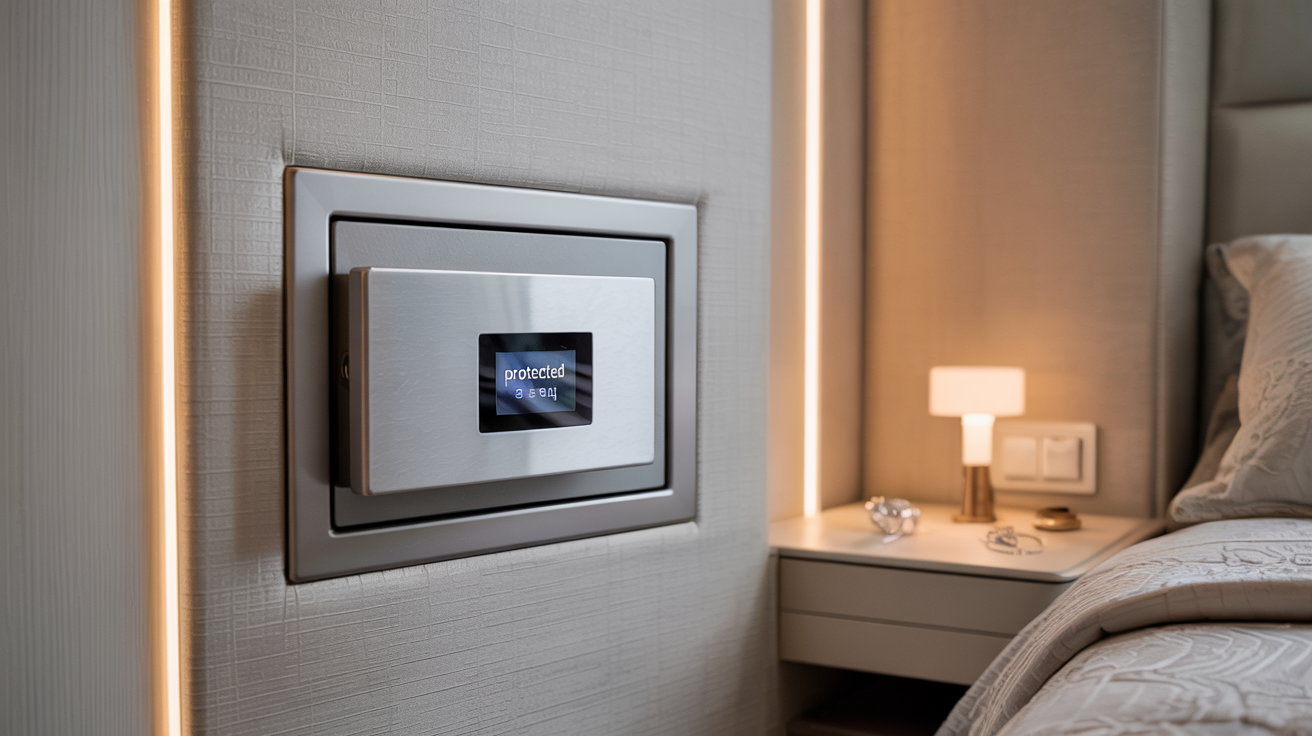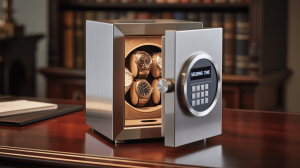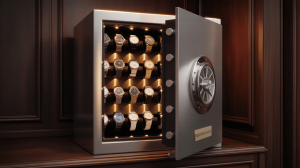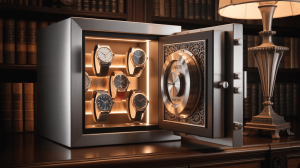For boutique hotels, luxury retailers, and high-net-worth property managers, space-efficient security isn’t a luxury—it’s a necessity. But here’s the kicker: wall-mounted jewelry safes don’t just protect valuables—they elevate interior design while maximizing cramped spaces. This guide reveals how compact safes deliver enterprise-grade security without sacrificing style.
1. What Is a Wall Mounted Jewelry Safe?
A wall-mounted jewelry safe is a covert vault designed for discreet asset protection. Ready for the good part? It replaces clunky floor models with slim, customizable units that hide in plain sight.
Key features:
- Space-saving design: 3–6 inches deep vs. 24-inch floor safes.
- Stealth integration: Mirrored fronts, artwork overlays, or textured panels.
- Commercial-grade locks: Biometric scanners, time-delay PINs, audit trails.
Traditional floor safes consume precious square footage in tight layouts. Wall safes, however, turn unused vertical space into secure storage—like a secret compartment for your crown jewels.
| Feature | Floor Safe | Wall-Mounted Safe |
|---|---|---|
| Installation | Requires floor slab | Fits standard wall cavities |
| Visibility | High theft target | Blends with decor |
| Capacity | 5+ cubic feet | 1–3 cubic feet (optimized) |
2. Why Choose a Wall Safe for Small Spaces?
Urban showrooms and boutique hotels can’t waste an inch. Here’s the twist: wall safes solve spatial and security challenges simultaneously.
● Space reclamation: A 2.5 cu.ft wall safe saves 8 sq.ft of floor space—enough for an additional display case.
● Theft psychology: 68% of burglars avoid properties with hidden safes (FBI Crime Data).
● Brand alignment: Chanel boutiques use mirrored safes to maintain minimalist aesthetics.
Case study: A Tokyo jewelry store increased sales floor space by 12% after replacing floor safes with wall units disguised as decorative panels.
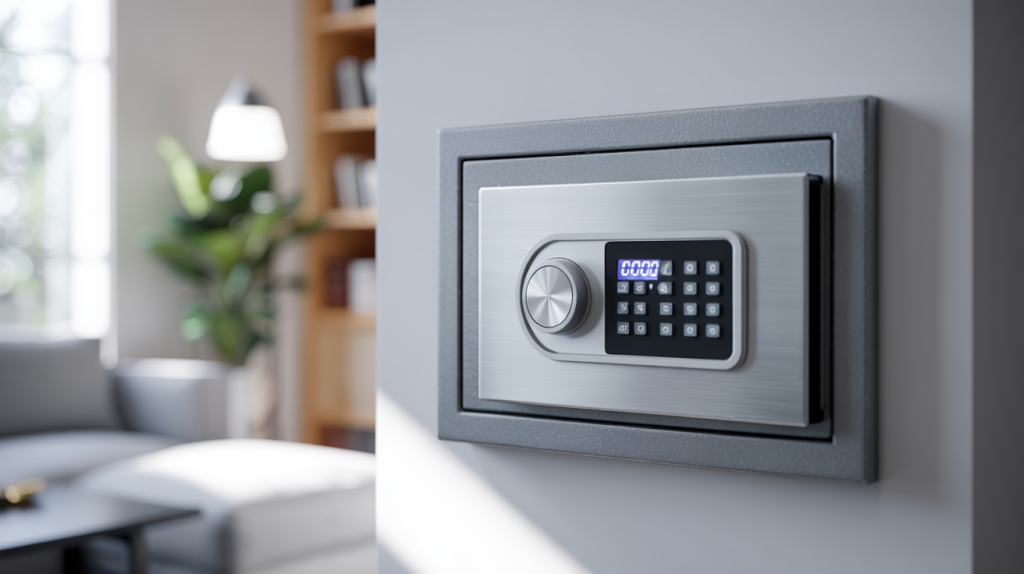
3. How Secure Are Wall Mounted Jewelry Safes?
Critics claim wall safes are vulnerable—but here’s what they miss: modern units rival bank vaults.
- Steel construction: 14–16 gauge steel resists sledgehammers for 15+ minutes.
- Multi-point locking: 4–8 motorized bolts anchor into wall studs.
- Tamper response: Silent alarms trigger CCTV recording and staff alerts.
4. What Materials Ensure Durability and Style?
Material choices impact both security and decor harmony:
- 316L stainless steel: Resists coastal humidity and fingerprints.
- Ceramic fire lining: Withstands 1,400°F for 90 minutes.
- Anti-glare glass: Displays jewels without UV damage.
| Material | Ideal For | Maintenance Tip |
|---|---|---|
| Brushed nickel | Modern interiors | Wipe with microfiber cloth |
| Wood veneer | Traditional spaces | Polish with beeswax |
| Magnetic chalkboard | Retail displays | Use liquid chalk markers |
5. How to Install in Small Spaces Without Damage?
Improper installation causes 40% of safe failures (Lockmasters Institute). Follow this protocol:
- Pre-installation scan: Use thermal cameras to avoid electrical/plumbing lines.
- Reinforcement: Install steel backplates in drywall cavities.
- Epoxy anchoring: Industrial adhesives prevent pry-bar attacks.
Pro tip: The Ritz-Carlton uses vibration sensors during installation to prevent structural damage in historic buildings.
6. Can You Customize the Safe to Match Decor?
Bespoke customization transforms safes into design features:
- Mirror finishes: Create illusion of space in cramped rooms.
- Artwork replication: Turn safe doors into Rothko replicas.
- Integrated lighting: LED strips highlight jewels during client viewings.
7. What Size Fits Your Jewelry Collection?
Undersizing leads to damaged goods. Use this formula:
Safe Depth = Longest Necklace + 1.5 inches
For a 50-piece inventory:
- Compact (18”W x 24”H): 30 rings, 10 necklaces, 5 watches.
- Large (36”W x 48”H): 100+ pieces with adjustable trays.
8. Are Smart Wall Safes Worth It for Small Homes?
Smart tech isn’t just for mansions. Compact models offer:
- Bluetooth locking: Grant temporary access to staff via app.
- Inventory tracking: RFID tags log item check-in/out.
- Voice commands: “Hey Google, lock the master suite safe.”
9. How to Maintain a Wall Safe in Tight Spaces?
Neglect shortens lifespan by 60% (Safe & Vault Technicians Association):
● Monthly: Lubricate bolts with Teflon spray.
● Quarterly: Test backup batteries.
● Annually: Recharge fireproof gel seals.
10. What Are the Hidden Costs?
Budget for these often-overlooked expenses:
- Custom sizing: +15–30% for non-standard dimensions.
- Insurance audits: $200–$500 for certification compliance.
- Energy use: Smart models consume 50–100 kWh/year.
11. Top 5 Compact Wall Safe Brands
| Brand | USP | Price Range |
|---|---|---|
| Gardall | Best fireproofing | $1,200–$3,000 |
| Homak | Rental-friendly | $800–$1,800 |
| Vault Pro | Tech integration | $2,500–$5,000 |
12. How to Hide the Safe in Plain Sight?
● Faux HVAC vents: Add dummy ductwork in ceilings.
● Bookshelf integration: Match shelving materials/colors.
● Interactive art: Install touch-sensitive digital frames.
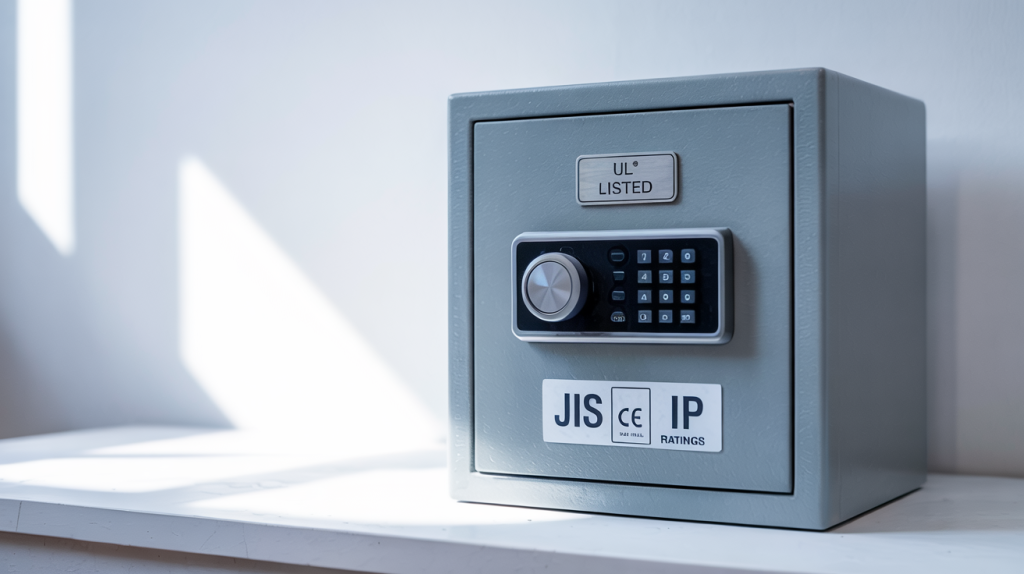
13. What Security Certifications Matter?
- UL 1037: Anti-theft testing (hammer/grinder attacks).
- EN 1143-1: European burglary resistance standard.
- JIS S 1037: Japanese fire/water resistance benchmark.
14. Can You Relocate the Safe Later?
Yes, but expect:
- Wall repairs: $150–$400 for drywall/plaster.
- Re-certification: $300+ for insurance compliance.
- Anchoring: Titanium bolts required for concrete relocations.
15. Integrating with Building Security Systems
For enterprise-grade protection:
- Sync with access control: Restrict safe access to authorized staff badges.
- Pressure sensors: Detect tampering during off-hours.
- AI cameras: Flag unusual activity near safe locations.
Conclusion
Wall-mounted jewelry safes redefine spatial efficiency for luxury businesses. By merging covert security with design flexibility, they protect assets while enhancing brand aesthetics. For hotels, retailers, and elite property managers, this isn’t just storage—it’s a strategic upgrade.
FAQ Section
Q1: What’s the minimum wall thickness required?
Concrete: 4 inches. Drywall: Requires steel backer plate.
Q2: Do mirrored safes show fingerprints?
Anti-smudge coatings prevent marks on commercial models.
Q3: Can I install a safe in a bathroom?
Yes, but choose humidity-resistant 316L steel.
Q4: Are these safes earthquake-proof?
Models with inertial locks auto-seal during tremors.
Q5: How long do biometric locks last?
10+ years with monthly fingerprint sensor cleaning.

